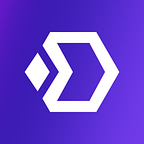Regulatory Landscape for Decentralized AI: Navigating Legal Frameworks
In the rapidly evolving landscape of artificial intelligence (AI), the intersection with blockchain technology has given rise to unprecedented opportunities and challenges. At the forefront of this convergence is DcentAI, a groundbreaking project with a mission to decentralize GPU and storage power, fundamentally reshaping the dynamics of AI access and utilization.
With AI companies wielding immense computational resources, often leading to monopolistic control over innovation, DcentAI offers a disruptive solution aimed at democratizing access to these essential resources.
However, the journey towards decentralized AI is fraught with regulatory complexities. From navigating data protection laws like GDPR to addressing intellectual property rights in a distributed ecosystem, DcentAI must confront a myriad of regulatory hurdles. Moreover, achieving compliance with regulatory standards such as HIPAA is imperative to ensure the project’s viability and trustworthiness.
In this article, we delve into the regulatory landscape surrounding decentralized AI, exploring the challenges, compliance requirements, and emerging trends shaping the future of this transformative field.
Through a closer examination of DcentAI and its regulatory implications, we aim to provide insights into the intricate interplay between technological innovation and legal frameworks in the realm of decentralized AI.
Regulatory Challenges and Uncertainties Facing Decentralized AI Projects
Decentralized AI projects like DcentAI encounter a labyrinth of regulatory challenges, ranging from data protection laws to jurisdictional ambiguities. Firstly, compliance with stringent data protection regulations such as GDPR presents a formidable hurdle.
DcentAI must devise innovative mechanisms to ensure user privacy and data security while operating within a decentralized network where traditional centralized controls are absent.
Secondly, navigating intellectual property rights in a decentralized ecosystem poses complex legal questions. As DcentAI decentralizes GPU and storage power, issues regarding ownership, attribution, and licensing of AI algorithms and data arise. Clarifying the rights and responsibilities of contributors within the decentralized network becomes paramount to foster innovation and mitigate disputes.
Furthermore, jurisdictional uncertainties add another layer of complexity. DcentAI operates in a borderless digital realm, transcending traditional regulatory boundaries. Determining which jurisdiction’s laws apply and how to reconcile conflicting regulations across jurisdictions becomes a daunting task.
Clear regulatory guidance and international cooperation are essential to address these jurisdictional ambiguities and provide a conducive environment for decentralized AI projects like DcentAI to flourish.
Compliance Requirements for Decentralized AI Projects
Decentralized AI projects, exemplified by DcentAI, face a plethora of compliance requirements spanning various regulatory frameworks. Firstly, stringent data protection regulations like GDPR and HIPAA impose obligations on DcentAI to safeguard user data and ensure privacy-preserving practices within its decentralized network. Implementing robust encryption, pseudonymization techniques, and transparent data governance mechanisms are crucial strategies for achieving compliance with these regulations.
Moreover, DcentAI must navigate industry-specific regulations such as PCI-DSS, especially if its applications involve processing payment card data. Adhering to PCI-DSS standards requires stringent security measures to protect sensitive financial information, necessitating comprehensive audits and security assessments within the decentralized ecosystem.
Regulatory sandboxes offer a pragmatic approach for DcentAI to test innovative solutions in a controlled environment while ensuring compliance with evolving regulatory standards. By collaborating with regulatory authorities and industry stakeholders within these sandboxes, DcentAI can iteratively refine its governance frameworks and technical protocols to align with regulatory expectations.
Overall, achieving compliance for decentralized AI projects like DcentAI demands a multifaceted approach, encompassing technical, legal, and regulatory considerations. By proactively addressing compliance requirements and leveraging regulatory sandboxes for experimentation and validation, DcentAI can navigate the intricate regulatory landscape while fostering trust and confidence among users and stakeholders.
Emerging Regulatory Trends and Initiatives Related to Decentralized AI
As decentralized AI projects like DcentAI continue to gain traction, a myriad of emerging regulatory trends and initiatives are shaping the regulatory landscape. Governments worldwide are increasingly recognizing the transformative potential of decentralized AI and are proactively crafting policies to foster innovation while safeguarding public interests. This includes initiatives to promote research and development in AI, as well as efforts to establish regulatory sandboxes where projects like DcentAI can experiment within a controlled environment.
Industry standards are also evolving to address the unique challenges posed by decentralized AI. Collaborative efforts among industry stakeholders aim to establish best practices and guidelines for governance, interoperability, and accountability within decentralized ecosystems. DcentAI, as a pioneering project in decentralizing GPU and storage power, is actively contributing to the development of these standards, leveraging its expertise to shape the future of decentralized AI regulation.
Regulatory sandboxes, in particular, offer a pragmatic approach to foster innovation while managing regulatory risks. By providing a safe space for experimentation and collaboration between regulators and innovators, sandboxes enable projects like DcentAI to navigate regulatory uncertainties, validate their solutions, and iterate on governance frameworks in real-world settings.
In summary, regulatory trends surrounding decentralized AI are characterized by a dynamic interplay between government policies, industry standards, and regulatory sandboxes. As DcentAI continues to drive innovation in decentralizing AI resources, it remains poised to influence and adapt to these evolving regulatory trends, shaping the future of decentralized AI regulation.
Final Words
In navigating the complex regulatory landscape for decentralized AI, projects like DcentAI represent both the vanguard of innovation and the nexus of regulatory challenges. While regulatory hurdles loom large, collaborative efforts between industry stakeholders and regulators, alongside initiatives such as regulatory sandboxes, offer a pathway forward.
DcentAI’s commitment to democratizing access to GPU and storage power, coupled with its proactive engagement in shaping regulatory standards, positions it at the forefront of decentralized AI regulation. As regulatory trends continue to evolve, DcentAI stands poised to drive positive change, fostering a more inclusive and innovative AI ecosystem.
To learn more about DcentAI, visit our Facebook and X accounts.
Become a pioneer of DcentAI community!
